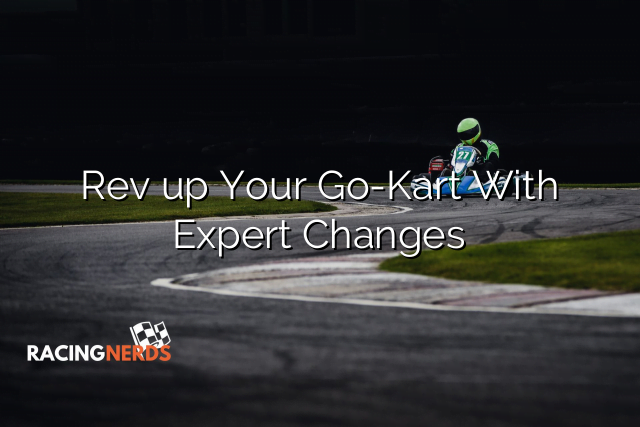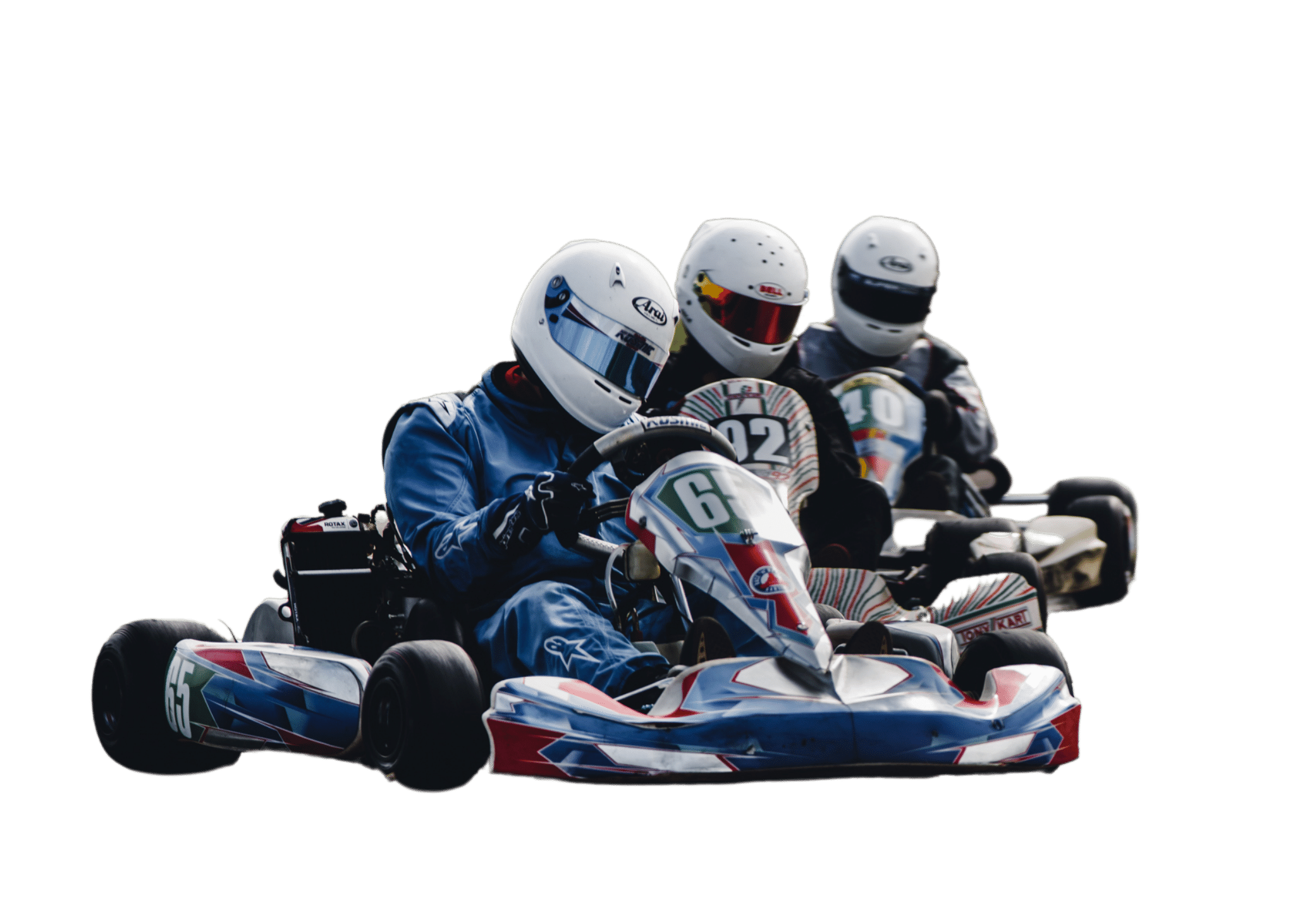
In the realm of competitive go-kart racing, the quest for speed is an intricate dance of mechanical prowess and driver skill. ‘Rev up Your Go-Kart With Expert Changes’ is a discourse on the meticulous process of fine-tuning a go-kart for optimum performance. It illuminates the subtleties of engine calibration, aerodynamic adjustments, and chassis fine-tuning, inviting racers to understand the profound effects of each modification.
By methodically implementing expert recommendations, one can elicit significant gains in lap times and handling precision. However, the article does not merely provide a recipe for enhancement but also encourages a deeper exploration into the synergetic relationship between driver and machine.
As we unfold the layers of complexity inherent in go-kart optimization, the question lingers: how can one identify and execute the changes that will truly make a difference in a world where every millisecond counts?
Embracing incremental adjustments is pivotal in the meticulous process of refining a go-kart’s performance. This systematic approach underscores the importance of feedback in discerning the subtle nuances that differentiate a competitive setup from an average one.
By isolating variables and introducing singular modifications, a technician can accurately attribute any alterations in lap times or handling characteristics to specific adjustments. This precision is critical in maximizing performance, as it enables the driver and support team to understand the complex interplay between the kart’s components and the racetrack environment.
This systematic approach fosters a culture of continuous improvement, where each incremental refinement is a calculated step towards achieving optimal racing efficiency.
Gleaning insights from countless laps, drivers and technicians leverage on-track experience to refine go-kart setups for peak performance. This empirical approach is crucial for learning from mistakes and maximizing performance. Real-world data provides a granular understanding of how modifications affect handling and speed. It’s a meticulous process of trial, error, and success, where each adjustment is validated against the stopwatch.
| Experience Factor | Description | Impact on Performance |
|---|---|---|
| Lap Time Analysis | Reviewing lap times to assess the impact of setup changes. | Direct measurement of performance gains or losses. |
| Driver Feedback | Gathering input from the driver about kart behavior. | Guides precise adjustments to align with driver preferences. |
| Track Conditions | Monitoring changes in weather and track surface. | Ensures setup is optimized for current conditions. |
| Data Logging | Using telemetry to capture detailed performance data. | Allows for data-driven decisions and refinements. |
| Error Correction | Identifying and rectifying setup mistakes. | Prevents recurrence of performance issues. |
Harnessing on-track experience, go-kart drivers and technicians have learned that effective communication and the interpretation of kart feedback is critical for refining setups and achieving optimal performance.
Mastering kart control is an intricate dance between driver skill and mechanical precision. Drivers must articulate the nuances of kart behavior under various conditions—whether it’s understeer on corner entry or oversteer on exit.
This granular feedback guides technicians in optimizing suspension settings, balancing grip, and kinematic distribution. A technical lexicon develops over time, enabling a high-resolution dialogue about performance characteristics.
Such detail-oriented feedback loops are essential in tweaking the kart to the edge of its performance envelope, ensuring that every adjustment translates into tangible lap time improvements.
When refining a go-kart’s performance, the strategic comparison of various setup configurations is essential to discerning which adjustments yield the most advantageous results on the track.
Comparing setups systematically, with a meticulous approach to evaluating changes, is crucial in the optimization process. This involves a deliberate analysis where each modification is implemented sequentially, allowing for an unambiguous correlation between the alteration and its impact on kart behavior.
Objective data collection, such as lap times and telemetry, provides a quantifiable measure of performance enhancements or detriments. Experienced practitioners recognize the nuances in handling and speed, understanding that a balance between driver comfort and mechanical efficiency is fundamental.
Hence, a technical, data-driven methodology underpins effective setup comparison strategies, ensuring precision in the pursuit of optimal racing conditions.
Establishing a reliable base setup is a critical first step in ensuring a go-kart’s competitive performance on varying race tracks.
This foundational configuration serves as a reference point for iterative fine tuning techniques, allowing drivers and engineers to methodically adjust components to suit specific course conditions.
Paramount in this process is optimizing weight distribution, which is instrumental in achieving a balanced and responsive chassis.
A meticulously crafted base setup accounts for factors such as track surface, temperature, and kart behavior, integrating empirical data with the nuanced feel of an experienced pilot.
Building upon the solid foundation of a meticulously crafted base setup, learning from the pros offers invaluable insights into fine-tuning a go-kart for peak performance. Interacting with experts in the field is crucial for gaining valuable insights that can propel a driver from good to great. Here’s how the process typically unfolds:
Knowledge Acquisition
Skill Refinement
Strategy Development
Precision in each step is key to extracting the maximum potential of your go-kart.
Mastering the art of cornering in go-kart racing hinges on fine-tuning your setup to optimize grip and balance through the bends. Precise adjustments to the kart’s suspension are critical when aiming to excel in cornering techniques.
Optimizing suspension involves a meticulous balance between rigidity for responsiveness and flexibility for maintaining traction. This requires an analytical approach to chassis tuning, including tweaking the camber and caster angles to alter the tire contact patch during corner entry, mid-corner, and exit.
The right setup reduces understeer or oversteer, allowing for smoother and faster cornering. Experienced tuners understand that each track demands a unique suspension calibration, which is why they meticulously adjust the ride height, axle stiffness, and damping characteristics to achieve corner mastery.
Achieving the optimal balance between a driver’s comfort and the go-kart’s speed is a critical challenge that requires meticulous attention to setup details. Here are key considerations for maximizing performance while optimizing handling:
Seat Positioning
Suspension Tuning
Ergonomic Steering
Every adjustment is a step towards a harmonious setup that unites the kart’s responsiveness with the driver’s ease, pivotal for sustained peak performance.
Adapting to track variations is essential for optimizing go-kart performance, as each circuit’s unique characteristics demand specific setup adjustments. By meticulously modifying the kart, one can ensure that the vehicle’s dynamics are fine-tuned, maximizing performance and optimizing handling across different tracks.
| Track Element | Adjustment | Outcome |
|---|---|---|
| Tight Corners | Narrower Track Width | Improved Cornering |
| Long Straights | Lower Gear Ratio | Increased Top Speed |
| Bumpy Surface | Softer Suspension | Enhanced Grip |
| High Altitude | Jetting Changes | Optimal Engine Performance |
Experienced racers understand that even minor tweaks can yield significant improvements in lap times. The table above serves as a guide for drivers to consider when adapting their go-kart setup to various track conditions, ensuring each change contributes to a competitive edge.
As racers meticulously adjust their karts to meet the demands of each circuit, it becomes equally important to refine one’s driving style to complement the kart’s evolving setup dynamics. Tuning for acceleration and optimizing braking performance are crucial elements that can significantly influence lap times. A driver must adapt to these changes with precision and expertise.
Tuning for Acceleration:
Optimizing Braking Performance:
Adapting Driving Style:
Drivers must evolve with their karts, ensuring that their techniques enhance the mechanical symphony of speed.
Weather and temperature significantly impact go-kart performance; optimal fuel adjustments ensure efficient combustion, while aerodynamic tweaks can mitigate atmospheric drag, maintaining competitive speeds and handling in varying conditions.
Ensuring safety is paramount when adjusting a go-kart setup. Prioritize brake maintenance and the use of protective gear to prevent compromising safety. Precise, experienced adjustments can enhance performance while maintaining rigorous safety standards.
To measure tire pressure impact on grip and handling, conduct systematic tire wear analysis and grip level testing across varying pressures. Optimal ranges differ per track condition, requiring precise adjustments for peak performance.
Weight distribution greatly influences go-kart handling; optimal corner balancing and strategic seat positioning are crucial for enhanced performance across various track layouts, ensuring agility and stability during cornering and acceleration phases.
Advanced data acquisition tools and sophisticated software provide in-depth performance metrics, enabling precise analysis for informed kart setup decisions. Analyzing telemetry, one interprets data trends to optimize handling and speed.
In conclusion, meticulous enhancements to go-kart configurations yield remarkable dividends in competitive motoring.
A methodical approach to incremental adjustments, informed by empirical evidence and seasoned expertise, ensures the optimization of each component’s performance.
Discerning the nuanced feedback from the machinery enables a fine-tuned balance between comfort and velocity, essential for cornering proficiency.
Adapting to evolving circuit conditions and driver preferences solidifies the foundation for continual improvement in this dynamic arena of motorsport.

